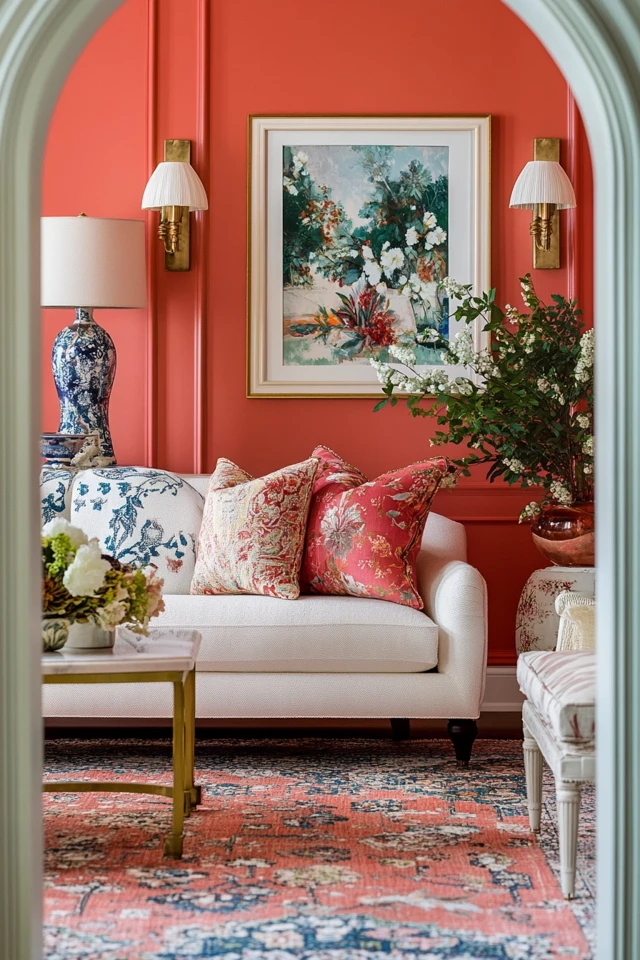Introduction
Repetition is a powerful yet often underappreciated principle of interior design. When used thoughtfully, repetition creates a sense of rhythm and unity, making a room feel cohesive and harmonious. Whether it’s repeating shapes, colors, textures, or patterns, this design approach helps tie different elements together, guiding the eye seamlessly throughout the space. The result? A room that feels intentional, polished, and balanced.
I first discovered the magic of repetition while redesigning a friend’s open-concept living and dining area. The room was beautiful but felt disconnected—there was no common thread linking the two spaces. By repeating the same wood tone in the dining chairs and coffee table, using similar textured fabrics for the sofa cushions and dining bench, and incorporating circular shapes in the lighting fixtures and mirrors, the two areas began to flow as one cohesive environment. The repetition transformed the space, making it feel unified without being monotonous.
In this guide, we’ll explore how to use repetition effectively to bring unity to your home. From subtle recurring elements to bold patterns, you’ll learn how to create a sense of order and harmony in every room.
The Perfect Design for You
Leveraging repetition is ideal for anyone who:
- Feels their room lacks cohesion or has too many competing design elements.
- Wants to create a more polished and intentional aesthetic.
- Enjoys mixing styles but needs a strategy to tie them together.
- Is designing an open-concept space and wants to create flow between zones.
Imagine a bedroom where the arched shape of the headboard is echoed in the bedside lamps and a statement mirror. Or picture a living room where the colors of a patterned rug are subtly repeated in the artwork, throw pillows, and curtains. These spaces feel calm and harmonious, thanks to the unifying power of repetition.
No matter your personal style, repetition can help you bring order to your design, making every room feel more connected and visually appealing.
Picture Gallery
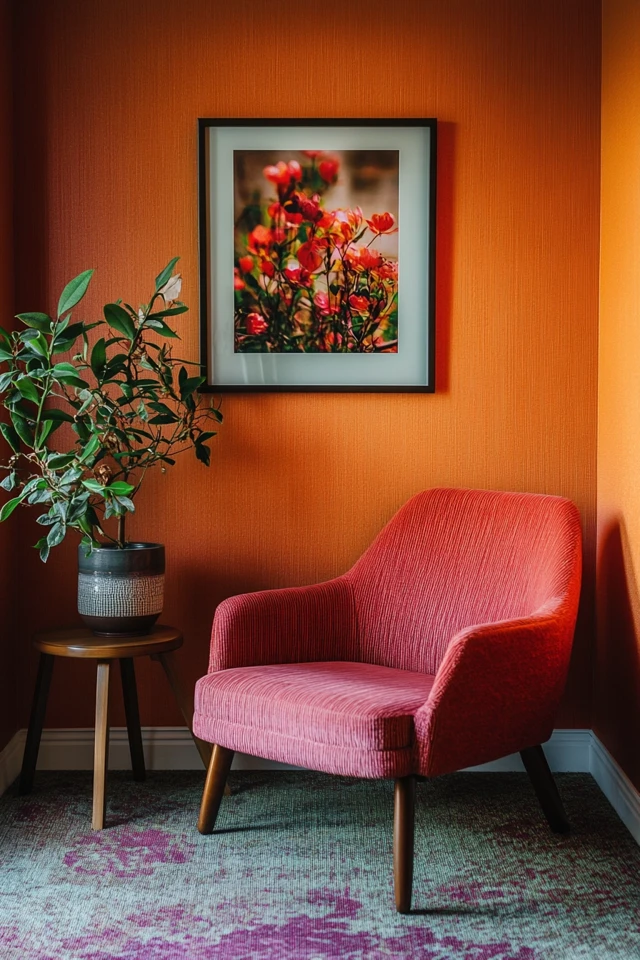
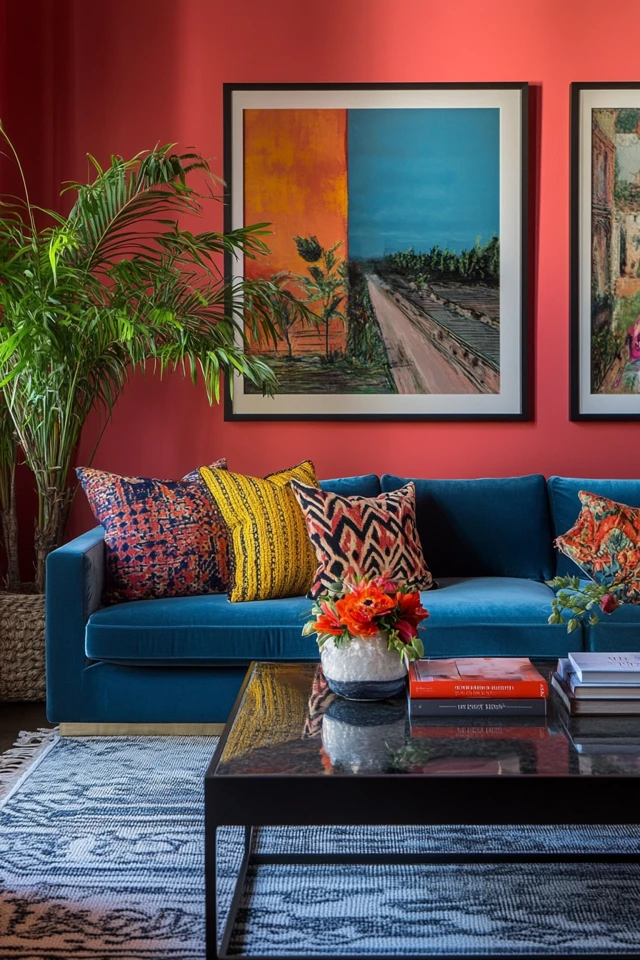
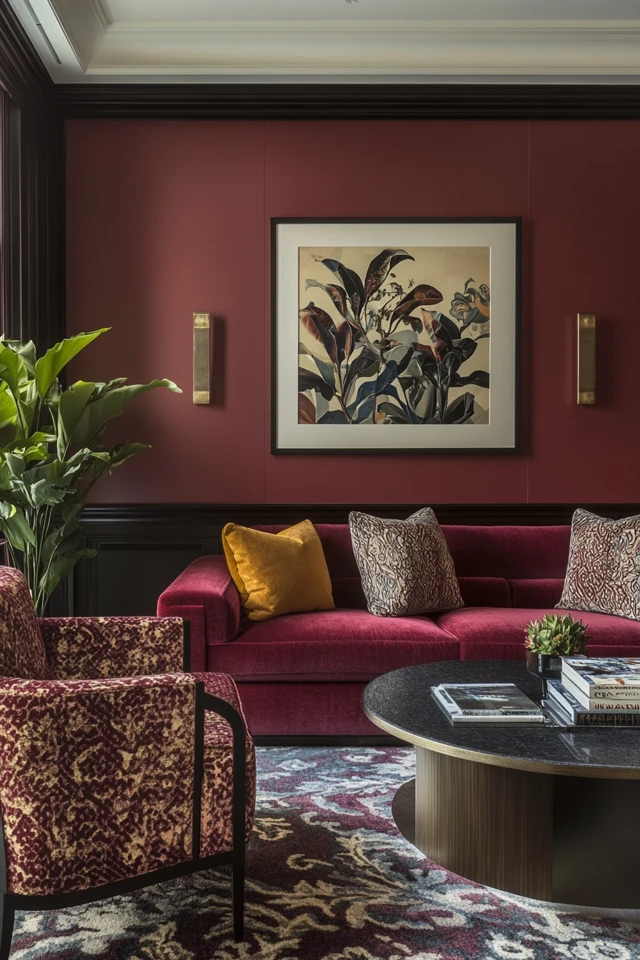
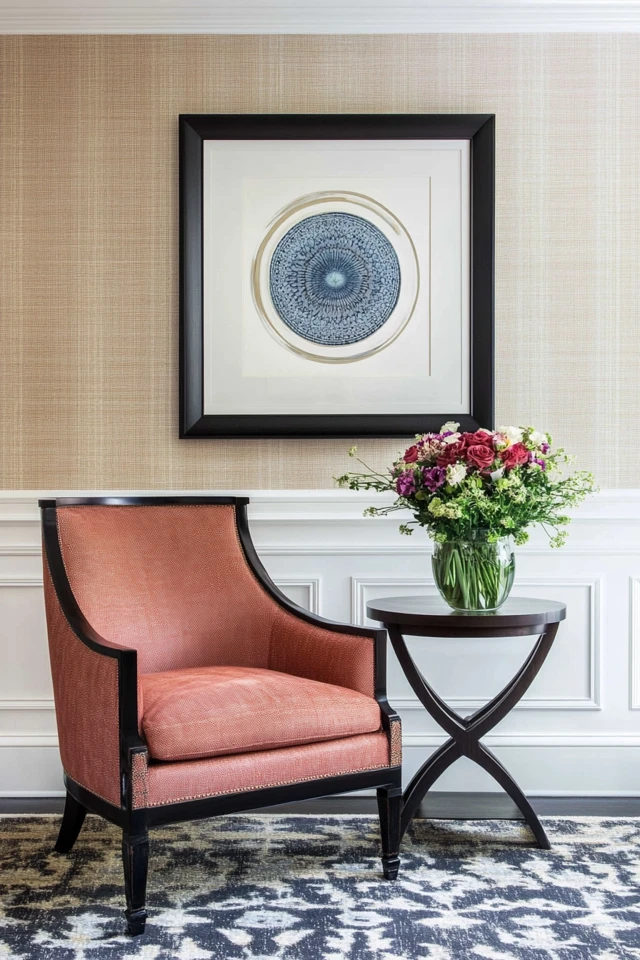
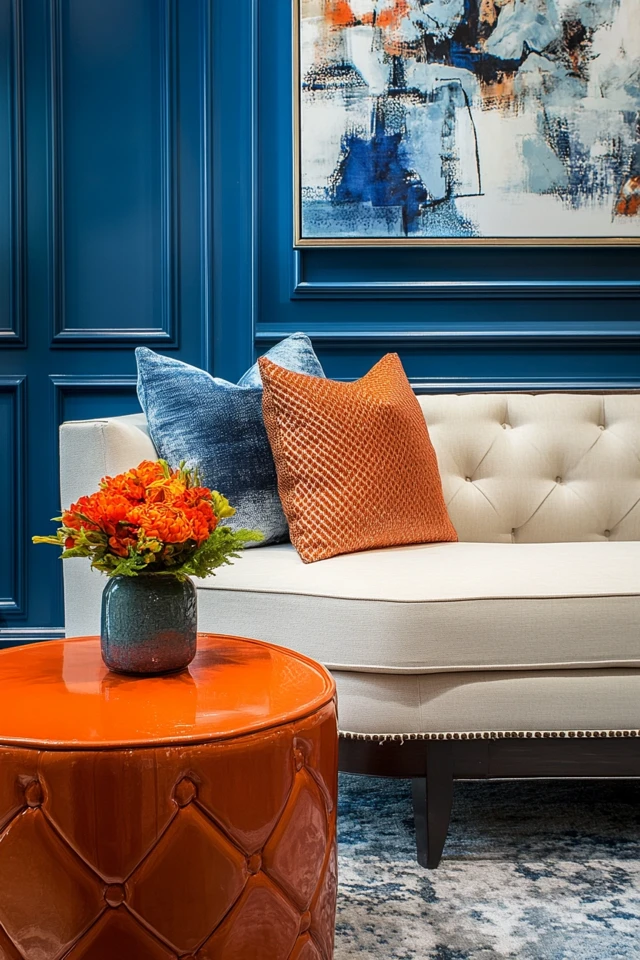
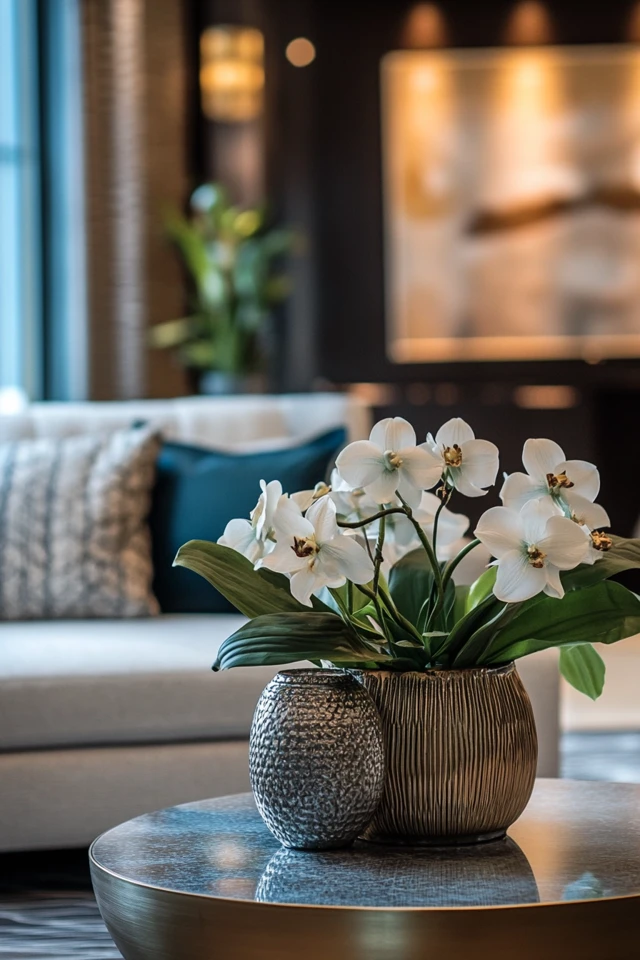
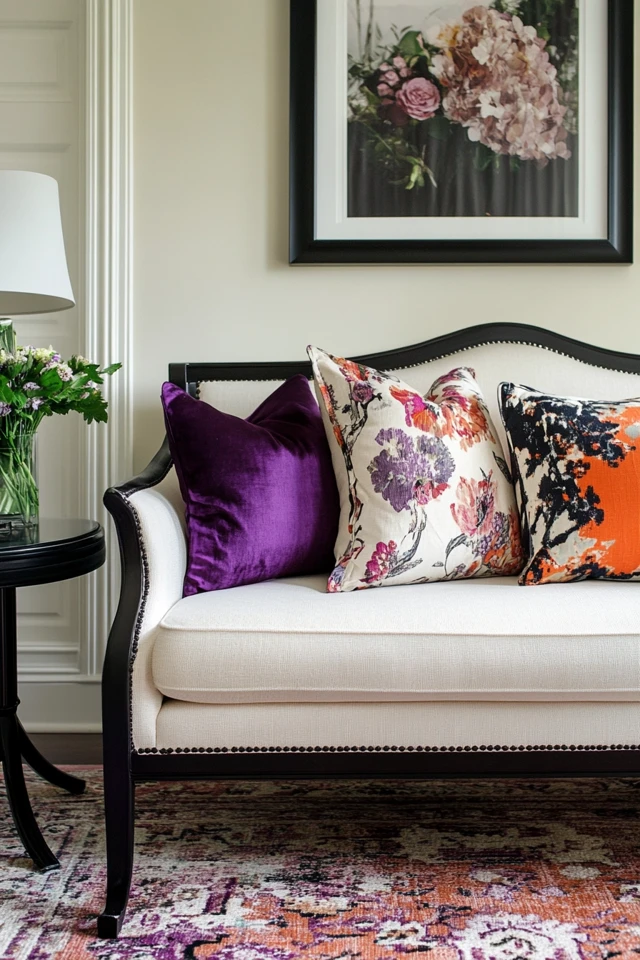
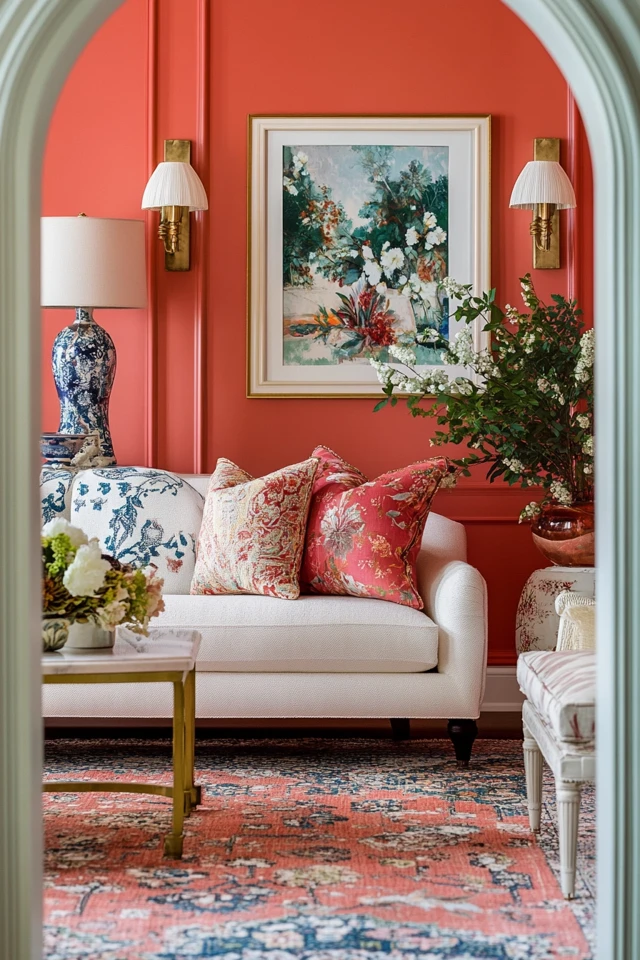
Why Repetition Works
Repetition is a cornerstone of good design because it creates visual consistency and reinforces the theme of a space. Here’s why it’s so effective:
- Establishes Cohesion: Repeating design elements ties different parts of a room together, creating a unified whole.
- Guides the Eye: Repetition creates a rhythm that naturally directs attention around the space, enhancing flow and movement.
- Builds Visual Interest: While too much variety can feel chaotic, repetition balances complexity with order, keeping the design engaging yet structured.
- Simplifies Open Spaces: In open-concept homes, repetition helps distinguish individual zones while maintaining a cohesive aesthetic.
- Adds Subtle Sophistication: Thoughtful repetition adds an undercurrent of elegance and intention to a room, even if it’s not immediately obvious.
Designers often liken repetition to a musical composition: the recurring notes and rhythms create harmony, while occasional variations add interest. This same principle applies to interior design, where repetition builds the foundation for a visually pleasing and balanced space.
How to Leverage Repetition to Bring Unity in Design: Step-by-Step
1. Start With a Repeating Color Palette
- Repeating colors across a room is one of the easiest ways to create cohesion:
- Choose a primary color and repeat it in textiles, decor, and accent pieces.
- Use secondary or complementary colors for subtle variations.
- A unified color palette ensures every element feels like part of the same story.
- Example: In a living room, echo the blue tones of a patterned area rug in the throw pillows, artwork, and curtains for a cohesive look.
2. Repeat Shapes for Visual Consistency
- Shapes are a versatile tool for repetition in design:
- Use recurring geometric shapes like circles, squares, or hexagons in furniture, lighting, and decor.
- Echo organic shapes, like arches or curves, in multiple elements for a softer, cohesive aesthetic.
- Repeating shapes adds structure and rhythm without overwhelming the space.
- Example: In a bedroom, an arched headboard can be mirrored in a round bedside lamp and an oval wall mirror for a unified look.
3. Incorporate Patterns Strategically
- Patterns are an eye-catching way to repeat design elements:
- Use a single pattern in multiple places, like matching a patterned rug with throw pillows or curtains.
- Alternatively, mix patterns that share common colors or motifs to create harmony.
- Patterns bring energy and repetition without feeling monotonous.
- Example: In a dining room, a floral-patterned table runner can be echoed in the seat cushions or artwork for a balanced design.
4. Use Textures to Add Depth
- Repeating textures adds subtle layers of cohesion:
- Choose one or two dominant textures, like wood grain or velvet, and repeat them in furniture, decor, or upholstery.
- Mix contrasting textures (like smooth and rough) sparingly to avoid visual clutter.
- This repetition creates a tactile connection throughout the space.
- Example: In a living room, a velvet sofa can be paired with velvet throw pillows and a textured velvet ottoman for a luxurious, cohesive feel.
5. Repeat Materials Across the Space
- Materials like wood, metal, or stone can be used repeatedly to tie elements together:
- Choose a single metal finish (e.g., brushed brass or matte black) for lighting, hardware, and decor.
- Repeat wood tones across furniture pieces to create consistency.
- Material repetition helps balance variety with cohesion.
- Example: In a kitchen, repeat the same wood tone for the cabinets, bar stools, and shelving to create a seamless look.
6. Create Symmetry for Balance
- Symmetry is a form of repetition that brings structure and order to a room:
- Place matching furniture, lamps, or decor items on either side of a focal point, like a fireplace or bed.
- Use symmetrical layouts for seating arrangements to reinforce unity.
- Symmetry adds a sense of formality and harmony to the design.
- Example: In a bedroom, place identical nightstands and lamps on either side of the bed to create a balanced, cohesive arrangement.
7. Echo Architectural Features
- Highlight architectural elements by repeating their shapes or lines:
- Echo the shape of a window in decor or furniture, like using a curved console table below an arched window.
- Use repeated design elements like trim, molding, or wainscoting for a consistent aesthetic.
- Architectural repetition reinforces the room’s character and style.
- Example: In a hallway with arched doorways, repeat the arch motif in artwork or light fixtures for a cohesive flow.
8. Tie Together Open-Concept Spaces
- In open layouts, repetition helps create flow between distinct zones:
- Use the same color palette, materials, or patterns across the living, dining, and kitchen areas.
- Incorporate repeating design elements like pendant lights or rugs to visually link spaces.
- Repetition ensures the open-concept layout feels cohesive yet functional.
- Example: Use the same type of pendant light over the kitchen island and the dining table to connect the two areas.
9. Include Repeating Accessories and Decor
- Small decor items are perfect for reinforcing repetition:
- Use matching vases, candleholders, or photo frames across different surfaces.
- Group similar objects, like a trio of ceramic pots or a pair of matching sculptures.
- These details subtly enhance the room’s unity.
- Example: In a living room, place matching candlesticks on the mantel and the coffee table for a cohesive accent.
10. Use Repetition in Lighting Design
- Lighting is an impactful way to repeat elements throughout a room:
- Use matching or complementary fixtures, like wall sconces, table lamps, and pendants.
- Echo the shape or finish of lighting fixtures in other decor elements.
- Lighting repetition ties the room together while creating functional layers.
- Example: In a dining area, use a row of identical pendant lights above the table to create rhythm and focus.
FAQ
1. Can repetition make a room feel boring?
Not if done thoughtfully! Use subtle variations in color, texture, or size to keep repetition dynamic and engaging rather than monotonous.
2. How do I avoid overusing repetition?
Balance repetition with contrast by incorporating a few unique or unexpected elements to add interest without disrupting cohesion.
3. Does repetition work in small spaces?
Yes! Repetition can make small spaces feel larger and more cohesive by creating visual flow and reducing clutter.
4. Can I repeat elements across multiple rooms?
Absolutely! Repeating colors, materials, or patterns across rooms creates a sense of continuity throughout your home.
5. What’s the difference between repetition and redundancy?
Repetition is intentional and enhances design, while redundancy feels unnecessary or excessive. Focus on balance and purpose when repeating elements.
Variations
- Minimalist Design: Use subtle repetition of shapes and textures to create a clean, harmonious look.
- Bold and Eclectic: Mix vibrant patterns and colors, but repeat key motifs or shades to maintain balance.
- Traditional Style: Rely on symmetrical layouts, classic patterns, and repeated materials for timeless elegance.
- Industrial Aesthetic: Repeat metal finishes, exposed textures, and linear forms for a cohesive, edgy vibe.
- Bohemian Charm: Layer patterns, fabrics, and natural materials, using repetition to tie eclectic elements together.
How to Showcase It
- Living Rooms: Repeat patterns in rugs, pillows, and artwork to create rhythm.
- Bedrooms: Echo shapes in the headboard, lamps, and wall decor for unity.
- Dining Rooms: Use a consistent material palette for the table, chairs, and lighting.
- Bathrooms: Repeat tile patterns or finishes in fixtures and accessories.
- Kitchens: Use matching hardware, lighting, and finishes to tie the space together.
Occasions to Feature It
- Everyday Living: Repetition ensures a cohesive design that’s easy to live with.
- Entertaining Guests: Unified spaces feel polished and inviting for gatherings.
- Open-Concept Layouts: Repetition creates flow between different zones.
- Seasonal Updates: Repeat seasonal accents, like colors or motifs, across your decor.
- Post-Renovation: Use repetition to tie together newly updated elements with existing design features.
Conclusion
Repetition is the secret to creating unity and balance in interior design. By repeating colors, shapes, textures, and patterns, you can tie together different elements of your space, making it feel cohesive and intentional.
Whether you’re working on a single room or an open-concept layout, leveraging repetition will help you design spaces that are harmonious, stylish, and uniquely yours. So, start small, experiment with recurring elements, and watch as your home transforms into a masterpiece of thoughtful design!

